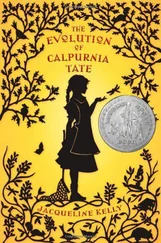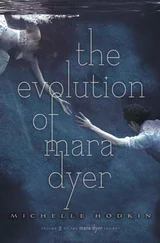Space and time are not the only continua. Another familiar example is the system of real numbers. Since this is a continuum, we can state a rule: no two numbers can be placed so close together that there is not an infinite number of numbers between them. For example, between 3 and 4 are an infinite number of numbers. One of these is (the number Pi) . As we have said, 77-is irrational, and, accordingly, although it is a very exact number we cannot write it with the ordinary ten symbols used in writing numbers. If we say that (the number Pi) is 3.14, we do not refer to a single number but are really saying that 77- is one of the infinite number of numbers in the gamut from 3.135 to 3.145. In that gamut we could indicate that ~ was in a much narrower gamut (which still contains an infinite number of numbers) by writing its value as 3.141592. This refers to the infinite number of numbers in the gamut of numbers ranging from 3.1415915 to 3.1415925. Since the value of - is known to over a thousand decimal places, we can define the gamut of numbers within which - lies more and more narrowly simply by carrying the numerical expression for 77 to more decimal places. But each gamut, no matter how narrow it gets, refers to an infinite number of numbers, because the system of real numbers is a continuum.
To those who are not familiar with mathematics, all of this discussion of (square root of 2) and of (the number Pi) may seem very strange, unreal, and unapplicable to anything with which they are concerned. I hope to show that the remarks I have just made about numbers are applicable not only to statements we all make about many familiar things but also to history.
A moment's thought will show that any statement about any continuum is just the same kind of statement as that which we have just made about . Just as any value we may give to - refers to a gamut containing an infinite number of numbers and this gamut can be made narrower by carrying our statement of the value of to more decimal places, so any statement about any color refers to a gamut that contains an infinite number of colors. Thus the word "orange" does not refer to a single color (any more than 3.14 refers to a single number), but rather refers to the gamut of colors between red and yellow. If we narrow this gamut by speaking of "yellow-orange," we still are referring to an infinite number of colors. And we could make the gamut narrower by referring to "orange yellow-orange" or to "yellow yellow-orange," thus bisecting the previous gamut. This process could be continued indefinitely, just as the value of can be carried to more decimal places. The value, however, of carrying either very far is not large.
We have been talking about rainbows, numbers, and space-time in order to establish what we mean by a continuum. Now we can define the term in the sense that we shall use it in discussing history. "A continuum is a heterogeneous unity each point of which differs from all the surrounding points but differs from them by such subtle gradations in any one respect that no boundaries exist in the unity itself, and it can be divided into parts only by imaginary and arbitrary boundaries."
We might add that some continua are perfect while others are highly imperfect, the distinction being that a perfect continuum has an infinite number of gradations between any two boundaries drawn in it, no matter how closely together they are drawn, while an imperfect continuum has a finite number of gradations between at least some of the boundaries drawn in the continuum. For example, the gamut of variations of light intensity during any twenty-four-hour period is a perfect continuum. But the "races" of mankind, however defined, are an imperfect continuum. For the variations in any standard we set as a criterion for race can be no more numerous than the number of individual human persons on the earth (that is, no more than a few billion variations) instead of the infinite number we expect to find in a perfect continuum. If, for example, we set color of skin as the criterion of "race," and we were to arrange the human beings on the globe in some magical fashion in a long line with the blackest black man at one end and, next to him, the second blackest man, and so on, in ascending order of light reflection from their skin surfaces, until we passed through all the blacks, browns, reds, yellows, and whites to end up with the whitest white man on the globe, possibly an albino Norwegian—if we were to do this, I feel confident there would be no place on that long line where any two adjacent persons would have any difference in skin color sufficient to be distinguished by any normal physical process. We might then decide that men, based on skin color, form a single race. Or, if we insist on having more than one race, we might simply divide the line at its midpoint and settle for two races—the "lights" and the "darks." But however many races we decided upon, there would be no discernible difference in skin color between any two adjacent persons between whom we drew a boundary line. Nevertheless, in the final analysis, this range of skin color would represent an imperfect continuum, because the variation of skin color between any two boundary lines or in the range of mankind as a whole would be numerable and not infinite.
We might, on the other hand, arrange mankind in a line on the basis of height. In that case we would have several billion variations over a total height difference of no more than seven or eight feet, giving an average difference between any two adjacent persons of no more than one fifty-millionth of an inch, a difference which is, once again, too slight to be discernible by any normal procedures and is, indeed, considerably less than the normal increase and decrease of any one person's height caused by rest and exercise during a day. Indeed, if we tried to arrange the persons of the world in order by height we would find the daily changes in individual height to be relatively so much greater than the average height differences between individuals that persons would be compelled, from their constantly changing heights, to change their positions in the line by hundreds of thousands and even millions of persons at relatively short intervals. If we were to use such a criterion as height as a measure of race, we could do so only so long as people were locally segregated into groups of obviously different average heights. As soon as people began to move about or mix socially, the classification would break down. And we could never classify racially, on this basis, any isolated individual. We deal with continua rationally either by dividing them into arbitrary intervals to which we give names, or by giving names to the two ends of the continuum and using these terms as if the middle ground did not exist at all. This last method is called "polarizing a continuum," and is frequently done even when the greatest frequency of occurrence is in the middle range. When the telephone rings in the sorority house because someone wants a "blind date," the sisters at once ask the vital question, "Is he tall or short?" They ask this question even though it is perfectly obvious that the majority of men are neither tall nor short but are nearer the middle range. Such polarization of continua is so common and so familiar that we come, frequently, to accept our categories as real instead of being arbitrary and imaginary, as they usually are. An accident report asks, "Day or night?" although accidents are most frequent when it is neither day nor night, but dusk. Many questionnaires polarize continua by asking us to check: "White—Colored?" "Man—Woman?" "Pro—Con?" In English law this is done in the distinctions between "Adult—Juvenile" or "Sane— Insane." In the social sciences it is done in such contrasts as "monopoly—competition" in economics, »democratic—authoritarian" or "totalitarian—liberal" in politics. We have already done it several times in this book, as in the dichotomy between natural science and social science or between objective and subjective. The familiar polarization of man into spirit and flesh dominated religious ethics for centuries. This practice of slicing continua into parts or even into dual poles and giving names to these artificial categories is necessary if we are to think about the world or to talk about it. But we must always remain alert to the danger of believing that our terms are real or refer to reality except by rough approximation. Only by making such divisions can we deal in a rational way with the many nonrational aspects of the world.
Читать дальше










